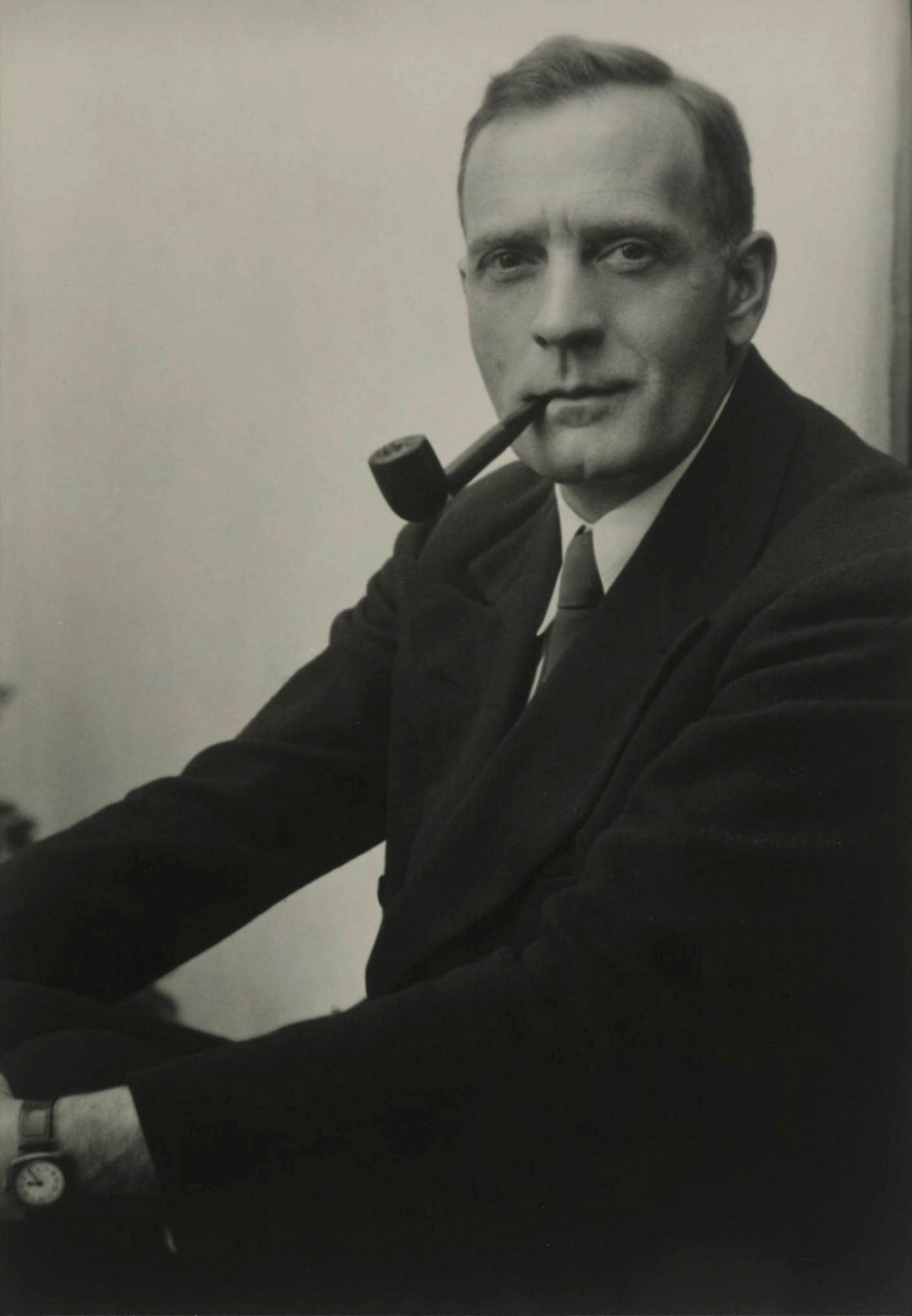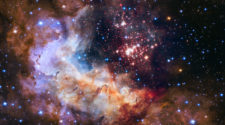When talking about the Hubble Space Telescope one man is often forgotten: That man who gave the space telescope its name: Edwin Powell Hubble. Today, most astronomers see him as the most important observational cosmologist in the 20th century and he played a crucial role in establishing the field of extragalactic astronomy.
As a result of Hubble’s work, our perception of mankind’s place in the Universe has changed forever: humans have once again been set aside from the centre of the Universe. When scientists decided to name the Space Telescope after the founder of modern cosmology the choice could not have been more appropriate.
A promising student
Edwin Hubble was born in Missouri in 1889, the son of an insurance executive, and moved to Chicago nine years later. At his high school graduation in 1906 he gained a scholarship for the University of Chicago where he finally obtained a degree in Mathematics and Astronomy in 1910.
The Rhodes scholar
A tall, powerfully built young man, Hubble loved basketball and boxing, and the combination of athletic prowess and academic ability earned him a Rhodes scholarship to Oxford. There, a promise made to his dying father, led him to study law rather than science, although he also took up Literature and Spanish.
He studied Roman and English Law at Oxford and returned to the United States only in 1913. Here he passed the bar examination and practised law half-heartedly for a year in Kentucky, where his family was then living.

The beloved high school teacher and coach
He was also hired by New Albany High School (New Albany, Indiana) in the autumn of 1913 to teach Spanish, Physics and Mathematics, and to coach basketball. His popularity as a teacher is recorded in the school yearbook dedicated to him: “To our beloved teacher of Spanish and Physics, who has been a loyal friend to us in our senior year, ever willing to cheer and help us both in school and on the field, we, the class of 1914, lovingly dedicate this book.”
When the school term ended in May 1914, Hubble decided to pursue his first passion and so returned to university as a graduate student to study more astronomy.
War postpones Hubble’s astronomical debut
Early in 1917, while still finishing the work for his doctorate, Hubble was invited by George Ellery Hale, founder of the Mount Wilson Observatory, in Pasadena, California, to join the staff there. This was a great opportunity, but it came in April of a dreadful year. After sitting up all night to finish his PhD thesis and taking the oral examination the next morning, Hubble enlisted in the infantry and telegraphed Hale: “Regret cannot accept your invitation. Am off to the war.”
He served in France and next returned to the United States in 1919. He went immediately to the Mount Wilson Observatory, where the newly discharged Major Hubble, as he invariably introduced himself, arrived, still in uniform, but ready to start observing.
Hubble was lucky enough to be in the right place at the right time. Mount Wilson was the centre of observational work underpinning the new astrophysics, later called cosmology, and the 100- inch Hooker Telescope, then the most powerful on Earth, had just been completed and installed after nearly a decade of work.
On the mountain Hubble encountered his greatest scientific rival, Harlow Shapley, who had already made his reputation by measuring the size of the Milky Way, our own Galaxy. Shapley had used a method pioneered by Henrietta Leavitt at the Harvard College Observatory that relied on the behaviour of standardised light variations from bright stars called Cepheid variables to establish the distance of an object.
His result of 300 000 light-years for the width of the galaxy was roughly 10 times the previously accepted value. However Shapley, like most astronomers of the time, still thought that the Milky Way was all there was to the Universe. Despite a suggestion first made by William Herschel in the 18th century, he shared the accepted view that all nebulae were relatively nearby objects and merely patches of dust and gas in the sky.
The turning point
Hubble had to spend many bitterly cold nights sitting at the powerful Hooker telescope before he could prove Shapley wrong. In October 1923 he spotted what he first thought was a nova star flaring up dramatically in the M31 “nebula” in the constellation of Andromeda. After careful examination of photographic plates of the same area taken previously by other astronomers, including Shapley, he realised that it was a Cepheid star. Hubble used Shapley’s method to measure the distance to the new Cepheid. He could then place M31 a million light-years away – far outside the Milky Way and thus itself a galaxy containing millions of stars. The known Universe had expanded dramatically that day and – in a sense – the Cosmos itself had been discovered!

Just the beginning
This discovery was of great importance to the astronomical world, but Hubble’s greatest moment was yet to come. He began to classify all the known nebulae and to measure their velocities from the spectra of their emitted light. In 1929 he made another startling find – all galaxies seemed to be receding from us with velocities that increased in proportion to their distance from us – a relationship now known as Hubble’s Law.
This discovery was a tremendous breakthrough for the astronomy of that time as it overturned the conventional view of a static Universe and showed that the Universe itself was expanding. More than a decade earlier, Einstein himself had bowed to the observational wisdom of the day and corrected his equations, which had originally predicted an expanding Universe. Now Hubble had demonstrated that Einstein was right in the first place.
The now elderly, world-famous physicist went specially to visit Hubble at Mount Wilson to express his gratitude. He called the original change of his beloved equations “the greatest blunder of my life.”
Another war stops Hubble again
Hubble worked on indefatigably at Mount Wilson until the summer of 1942, when he left to serve in World War II. He was awarded the Medal of Merit in 1946. Finally, he went back to his Observatory. His last great contribution to astronomy was a central role in the design and construction of the Hale 200-inch Telescope on Palomar Mountain. Four times as powerful as the Hooker, the Hale would be the largest telescope on Earth for decades. In 1949, he was honoured by being allowed the first use of the telescope.
No Nobel Prize for an astronomer
During his life, Hubble had tried to obtain the Nobel Prize, even hiring a publicity agent to promote his cause in the late 1940s, but all the effort was in vain as there was no category for astronomy. Hubble died in 1953 while preparing for several nights of observations, his last great ambition unfulfilled.
He would have been thrilled had he known that the Hubble Space Telescope is named after him, so that astronomers can continue to “hope to find something we had not expected”, as he said in 1948 during a BBC broadcast in London.



